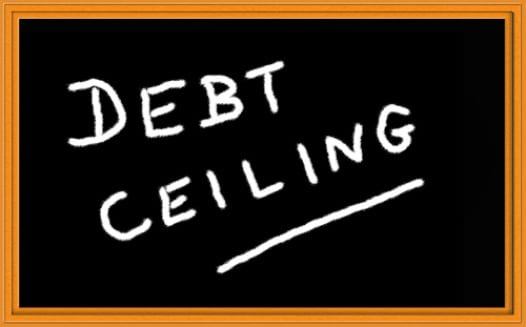Five Things You Should Know About the Debt Ceiling
The debt ceiling is the latest self-inflicted crisis created by the federal government so that Democrats and Republicans can point fingers at each other. Here are five things to catch you up on the action, as Congress and President Obama continue their quarrelsome relationship:
1. What is the Debt Ceiling?
The debt ceiling is the maximum amount of money the U.S. government is authorized to borrow to pay its bills. Every day, the government spends more than it takes in and makes up the difference by borrowing money. The current debt ceiling is $16.4 trillion, and the only way to keep it there is to balance the federal budget – i.e., spend only as much as you take in. The United States had a balanced budget from 1997-2001 during the Clinton administration. Both Houses of Congress were controlled by Republicans at the time, and the national debt was reduced by $560 billion. Prior to that, there were deficits every year from 1970-1996. There have been deficits every year from 2002-2013.
2. Who Created the Debt Ceiling?
The debt ceiling was created in 1917 to allow the United States to finance its entry into World War I. It was been with us since then, getting raised and lowered more than 100 times. It has changed 77 times since 1962 — 12 times in the last decade alone. The debt ceiling was raised seven times during George W. Bush’s two terms in office, almost doubling from $5.95 trillion to $11.31 trillion. It has been raised four times during Barack Obama’s presidency, going from $11.31 to $16.4 trillion. The latest plan will raise the ceiling once again and will allow the government to continue borrowing money until May 18.
3. Will Raising the Debt Ceiling for Three Months Help?
Yes, in the short run, it does help. Believe it or not, the federal government pays 80 million bills a month, so if the ceiling was not raised, no checks would be sent out for Social Security and Medicare; vendors for federal projects, especially those involving the Defense department, wouldn’t get paid; day-to-day operating of federal facilities, including national parks, would be suspended; students who get loans or grants from the federal government, wouldn’t get their checks; veterans benefits would be stopped; salaries for those currently serving in the military and those getting retirement benefits, would be cut off; and, finally, anyone expecting a tax refund would have to wait … and wait … and wait some more until the ceiling was raised again.
4. Why Does this Sound So Familiar?
It should. Some people are calling this “Fiscal Cliff 2.0” in honor of the self-inflicted crisis that ended on New Year’s Day. There isn’t a whole lot of difference between the two. Democrats and Republicans supposedly want to reduce the federal deficit – which, coincidentally, happens to be $16.4 billion – and thus eliminate our need to raise the debt ceiling. However, President Obama and Democrats think the only way to do that is to raise taxes and maybe cut spending on a few programs. The Republicans, on the other hand, think we should take an axe to almost every program, except Defense and a few others. (Defense takes up 20 percent of the federal budget.)
5. Is this Going to Turn Out Well?
Not likely. The term “kick the can down the road” became popular during the first fiscal cliff crisis, and Congress is once again kicking the can down the road. It is their responsibility to put together budgets and set limits on spending, but they apparently prefer to point fingers and place blame. President Obama is right in castigating them for being irresponsible. If they want him to quit borrowing money, they should quit passing spending bills that require him to borrow money to pay for them. On the other hand, Obama and the Democrats have offered no suggestions on ways to cut spending and reduce the deficit. In other words, nothing has changed. Fiscal Cliff 2.0 is likely to end the same way Fiscal Cliff 1.0 did: kicking the can a little further down the road.
Sources:
- Dexter, J. (2010, February 3). CNN Fact Check: The last president to balance the budget. CNN.com. Retrieved from http://politicalticker.blogs.cnn.com/2010/02/03/cnn-fact-check-the-last-president-to-balance-the-budget/
- Austin, A., and Levit, M. (2012, December 27). The Debt Limit: History and Recent Increases. Congressional Research Service. Retrieved from http://www.fas.org/sgp/crs/misc/RL31967.pdf
- Murse, T. (2011, July 12). Debt Ceiling History. About.Com. Retrieved from http://usgovinfo.about.com/od/federalbudgetprocess/a/US-Debt-Ceiling-History.htm
- Center on Budget Policy Priorities. (2012, August 13). Policy Basics: Where Do Our Federal Tax Dollars Go? Retrieved from http://www.cbpp.org/cms/index.cfm?fa=view&id=1258
- You will need Adobe Reader to view the PDF Download Adobe Reader








